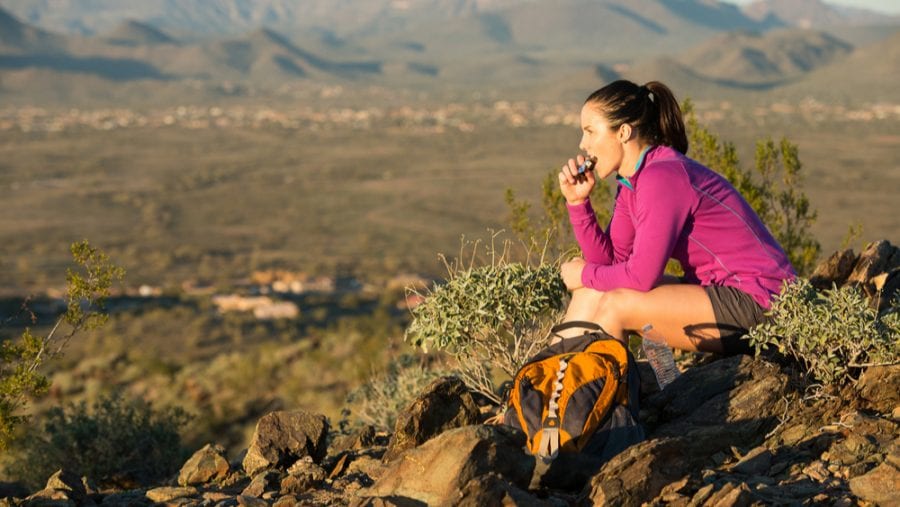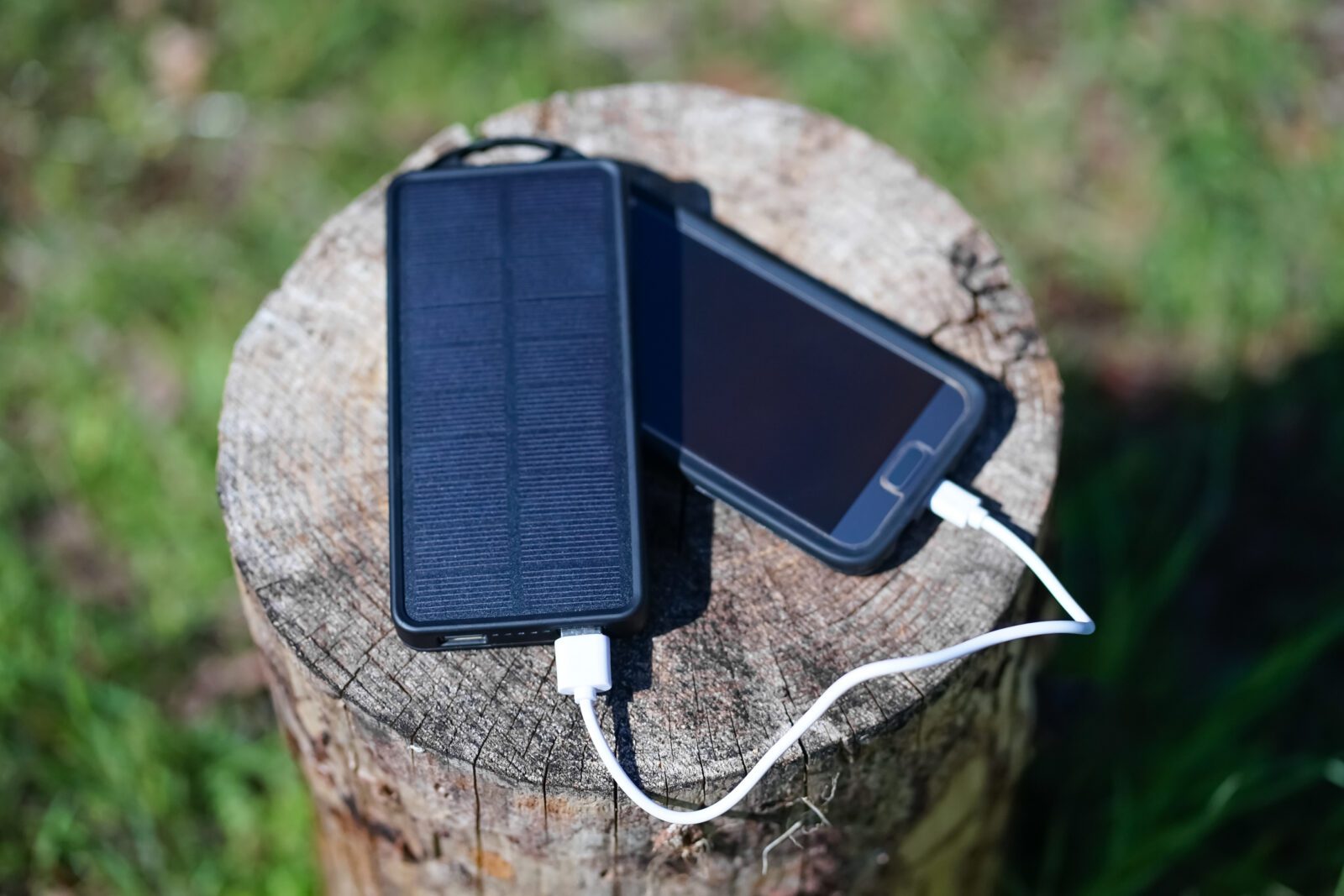Excited about your upcoming day hike but don’t know what you should pack?
We know how you feel.
Day hiking can be a fantastic way to get out and enjoy the great outdoors. But, figuring out precisely what to pack for your adventures without weighing yourself down on the trail isn’t easy, especially when you have so many different pieces of gear to choose from.
Thankfully, we’re here to help.
In this article, we’ll do a quick run-through of our ultimate day hike checklist. We’ll discuss the ins and outs of the most important pieces of gear that you ought to pack while day hiking to ensure that you’re prepared for whatever happens on the trail.
1. Hiking backpack

If you’re going on a day hike in a gorgeous locale like Hot Springs National Park, you’ll need a reliable backpack.
In fact, no day hike is complete without a hiking backpack to carry all your gear. Indeed, although most day hikes are light and fast adventures into the mountains, you’ll still need to carry around plenty of equipment to help you stay warm, dry, and comfortable throughout your adventure. So, having a pack that’s sturdy enough to accommodate all your gear is essential.
While everyone has different preferences for what they look for in a hiking pack, most day hikers find that a small, lightweight and highly breathable model is ideal. That way, you can transport all your essential items without feeling like your pack is holding you back on the uphill.
Read More : How to Pack Light for Your Next Camping Trip
2. Water bottles

Day hiking is a cardiovascular pursuit, so it’s imperative that you come prepared with water bottles to help you stay hydrated on the trail.
Of course, staying hydrated is particularly important in hot environments like Death Valley and Zion National Parks. But, hydration is key at all times, regardless of what the weather brings.
As a general rule, day hikers should aim to have about 2L of water-carrying capacity on the trail. Most people opt for two individual 1L water bottles, which allow you to stay hydrated throughout a long day of adventure.
Read More : How Much Water Should You Bring to Camping?
3. First aid kit

As with any outdoor adventure, no one should ever head out on a day hike without a quality first aid kit in tow.
While most day hikes are relatively short, a serious injury just one mile down the trail could easily turn into a major search and rescue operation in bad weather. So, having the supplies you need to handle most injuries in your first aid kit can make a huge difference in an emergency situation.
Ultimately, although it might seem like overkill to pack a first aid kit for a quick jaunt in the woods, it’s best to always have one in your pack. Even though you hope to never have to use it, a first aid kit is one of those things you forget about until you need it most.
4. Survival gears

Along the same lines as first aid kits, survival gears are another item that no day hiker should hit the trail without.
Even a short day hike can turn into an overnight epic when foul weather or unfortunate mishaps derail your adventures. Therefore, having all the gear you need to survive an unexpected night out in Olympic National Park or to find your way to the nearest trailhead on the Appalachian Trail is important.
It’s also worth considering adding other small emergency items, like a bivy sack, to your pack while day hiking. If you ever got caught out in the mountains unexpectedly for the night, you’ll sure be happy that you packed your trusty bivy sack.
5. Hiking rain jacket

While hiking in the rain might not sound like everyone’s cup of tea. But, if you spend enough time out on the trail, at some point, you’ll get caught out in the rain.
Therefore, hikers should always come prepared for inclement weather by packing a hiking rain jacket and rain pants on all adventures.
Now, if you’re venturing to a dry locale like Joshua Tree National Park, you might be wondering if a rain jacket is really worth packing.
The answer? Absolutely!
While the chance of rain is, admittedly, quite low in Joshua Tree, the chance of windy conditions is rather high. Since rain jackets can also provide lots of protection from the wind, they’re the perfect layer to always have in your pack.
Read More : 15 Tips for Camping in the Rain
6. Headlamp

We know what you’re thinking. A headlamp? I’m just going out on a day hike! I don’t need that.
Well, while it’s true that you hope to only be outside during the daylight hours on a day hike, there’s no guarantee that you won’t end up on the trail for longer than you originally anticipated. Whether you decided to add an extra peak ascent to your itinerary or you ended up hiking a bit more slowly than you expected, there’s always a chance you’ll get overnighted on the trail.
So, having a headlamp on you at all times, even if you’re only going on a short day hike – is of the utmost importance. Oh, and don’t forget to pack spare batteries!
You’ll be glad you did.
7. Hiking poles

Although many folks think of hiking poles as something that’s designed for backpacking, the truth is that they’re a great addition to any day hiking gear list.
In fact, day hiking can be just as hard on the knees as backpacking, especially if you’re moving quickly through the mountains. Therefore, having a set of hiking poles in your hand can help you feel more confident on the trail, all while reducing the overall impact on your knees.
Plus, most hiking poles are fairly lightweight and packable, so you can always attach them to your pack if you don’t need them. But, for those steep downhill sections of the trail, they’re hard to top.
8. Hiking snacks

No one likes to be hungry while in the great outdoors. So, if you want to stave off hunger while you cruise up and down the trail, you’ll need to have some tasty hiking snacks at the ready.
In general, it’s better to pack too many snacks than to pack too few. This means that you usually want to budget much more food for your adventure than you’d likely need. Doing so will help ensure that you have enough energy for the downhill section of the trail.
9. Hiking socks

Hiking socks are one of the most under-appreciated pieces of gear. Indeed, when compared to flashier items like a sweet new pair of hiking boots, socks usually just aren’t as impressive.
But, when your day hikes take you through wet and muddy terrain, there’s nothing better than putting on a second pair of clean socks during a rest stop on the trail.
Therefore, having a few spare pairs of hiking socks in your day pack at all times is essential. Even if you’re just going for a quick jaunt in the woods, it’s worth tossing a second pair of socks into your pack, just in case.
Read More : How to Prevent Blisters While Hiking
10. Knives

Whether you’re day hiking or backpacking, no one should ever hit the trail without a trusty knife in tow.
Knives are one of the most versatile tools out there, especially when you’re outside. From gear repair to chopping up sticks for kindling on an emergency fire, there are few tasks you can’t accomplish with a knife in hand.
As an added bonus, you might also consider bringing a multitool. Since many multitools also have a knife in addition to other useful tools, they can be a great and compact choice for short day hikes where keeping the weight in your pack at a minimum is key.
11. Hiking compass

Most day hikes take place on relatively well-marked trails. But, less popular trails have a way of disappearing in meadows and marshes, making it difficult to find your way in the mountains.
In these situations, having a hiking compass and a map of the area is essential. Indeed, with the right compass, you can quickly and easily navigate your way through tricky terrain while you’re out and about for the day.
If you want even more in terms of navigation capabilities while on the trail, a dedicated GPS hiking watch is also a nice choice. Many GPS watches also include fitness tracking abilities, too, so they’re a superb way to track your activity levels and navigate in the mountains, all at the same time.
Recommended Reads :
Gaby Pilson
Gaby is a professional mountain guide with a master’s degree in outdoor education. She works primarily in the polar regions as an expedition guide, though she can be found hiking, climbing, skiing, sailing, or paddling in some of the world’s most amazing places when not at work.


